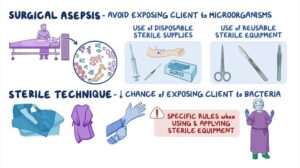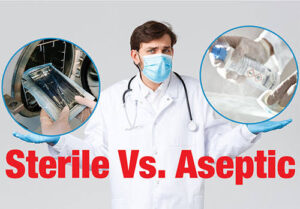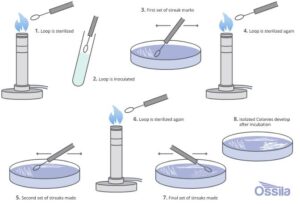Back to: MICROBIOLOGY 300 LEVEL
Welcome to class!
It’s always a joy to see you eager to learn. Today’s topic—Sterilisation, Disinfection, and Aseptic Techniques—is one of the cornerstones of microbiology and healthcare. Whether you’re working in a lab, a hospital in Abuja, or a rural health centre in Ogun, knowing how to properly handle and prevent contamination can literally save lives. So let’s walk through these essential infection control practices together.
Sterilization, Disinfection, Aseptic Techniques
Sterilisation
Sterilisation is the complete destruction or removal of all forms of microbial life, including bacterial spores. It is the highest level of cleanliness used for surgical tools, lab instruments, and other items that must be totally free of microbes.

Common sterilisation methods:
Moist heat (autoclaving): Uses steam under pressure (121°C for 15–20 minutes). This is the gold standard in labs and hospitals.
Dry heat: Hot air ovens (160–170°C for 2 hours) for materials like glassware.
Chemical sterilants: For heat-sensitive equipment, e.g., glutaraldehyde.
Radiation: Gamma rays or UV light for certain food products or plastic tools.
Think of sterilisation as cooking a pot of rice until not a single grain remains hard—it’s thorough and leaves no trace of life.
Disinfection
Disinfection means killing or removing most disease-causing organisms, but not necessarily all spores. It’s usually used on surfaces like tables, floors, and some instruments.

Types of disinfectants:
Alcohols (e.g., 70% ethanol): For skin and small equipment.
Chlorine compounds (e.g., bleach): For cleaning hospital surfaces.
Phenolics and quaternary ammonium compounds: For general surface cleaning.
Imagine a secondary school classroom being cleaned at the end of the day. It’s not sterile, but it’s safe for students the next morning.
Aseptic Techniques
Aseptic techniques are practices that prevent contamination by harmful microorganisms. They are used during surgeries, lab procedures, and even while giving injections.
Examples include:
Washing hands thoroughly before and after patient contact or lab work.
Using gloves, face masks, and sterile gowns.
Flaming tools like inoculating loops before and after use in the lab.
Keeping work areas clean and organised to avoid cross-contamination.
If you’ve ever seen a nurse clean your skin before an injection or a microbiologist work near a Bunsen burner, that’s aseptic technique in action.

Why does this matter in Nigeria?
In many Nigerian health facilities, infections after surgery or childbirth are common due to poor hygiene. By applying proper sterilisation, disinfection, and aseptic techniques, we can reduce hospital-acquired infections, improve outcomes, and save lives.
Summary
- Sterilisation destroys all microbes, including spores.
- Disinfection removes most harmful microbes but not all spores.
- Aseptic techniques prevent contamination during procedures.
- These methods are essential in labs, hospitals, and clinics to prevent infection.
Evaluation
- What is the key difference between sterilisation and disinfection?
- Name one chemical used for disinfection.
- Give two examples of aseptic techniques in a laboratory.
Every lesson adds to your confidence and capacity to change lives. As you learn to control microorganisms, you’re taking steps toward becoming a reliable microbiologist who contributes to safer hospitals and healthier communities. Keep shining and see you in the next class with Afrilearn!
